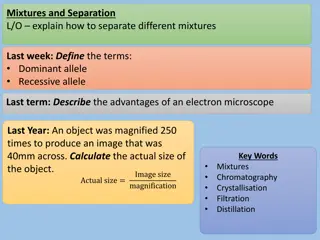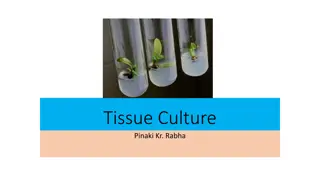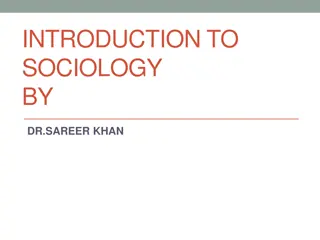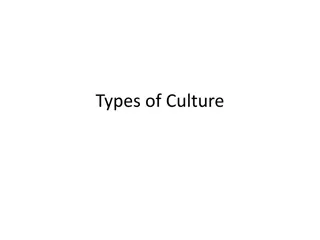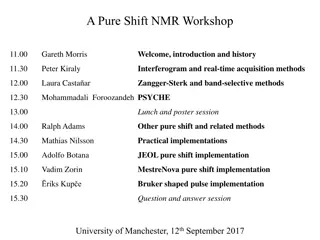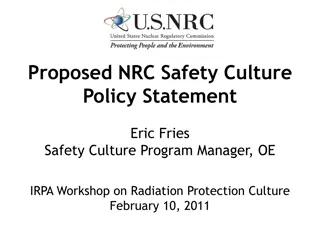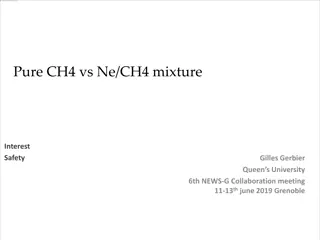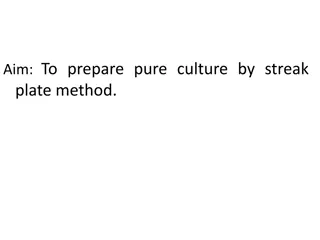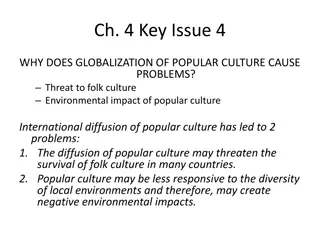
Understanding Pure Culture Techniques in Microbiology
Explore the concept of pure culture techniques in microbiology, which involves isolating one species from a mixed culture to obtain a genetically identical population. Learn about the importance, methods, and applications of pure culture collections in preserving genetic resources.
Download Presentation

Please find below an Image/Link to download the presentation.
The content on the website is provided AS IS for your information and personal use only. It may not be sold, licensed, or shared on other websites without obtaining consent from the author. If you encounter any issues during the download, it is possible that the publisher has removed the file from their server.
You are allowed to download the files provided on this website for personal or commercial use, subject to the condition that they are used lawfully. All files are the property of their respective owners.
The content on the website is provided AS IS for your information and personal use only. It may not be sold, licensed, or shared on other websites without obtaining consent from the author.
E N D
Presentation Transcript
StudyMafia.Org Pure Culture Techniques Submitted To: Submitted By: Studymafia.org Studymafia.org
Table Contents Definition Introduction About Pure Culture Pure Culture Collections Assessment of Pure Collections Importance of Pure Culture Pure Collection Techniques Conclusion 2
Definition The term "Pure Culture" refers to a population or colony of cells growing in the absence of other species or types. 3
Introduction Pure culture technique allows us to isolate one species from a mixed culture is a useful tool that helps to obtain a single kind of organism from a mixed culture. The idea that is if an agar plate is inoculated with only one species and there is no contamination, then each colony on a plate will consist of genetically identical cells have have come from a single progenitor or parent cell. 4
About Pure Culture Pure culture is defined as a laboratory culture that contains just one species of organisms in microbiology. Microbes are usually in mixed cultures. But, the pure culture can be derived from it through the transfer of a bit of its sample in the new and sterile growth medium. 6
About Pure Culture The process of pure culture isolation usually takes place by the dispersion of cells across the surface medium. This mainly involves thinning of the sample before it is inoculated into a new medium. There are several pure culture techniques utilized by scientists to carry out the process of the creation of discrete colonies of pure microbes. 7
About Pure Culture Microbiologists of those times readily adopted these methods for the production of a single strain of the organism. The inculcation of such techniques of pure culture led to bacterias characterization that was responsible for causing anthrax, tuberculosis, and such major diseases. 8
Pure Culture Collections These are a resource and method of preserving the genetic resources of these organisms. The collection of pure culture organisms varies widely depending on size and some specializations as well. These have gained importance over the years due to their authenticity, reliability, and practical uses. 9
Assessment of Pure Culture The assessment of the purity of culture is carried out through different methods. These are as follows: The same cultural characteristics are shown on the media obtained in the isolated colonies of pure culture organisms. 10
Assessment of Pure Culture The same culture organisms look alike when observed under the microorganisms. This means that they get the same stain and have the same morphology. Just like similar biochemical results the isolated colonies of pure culture perform identically, i.e., separately. 11
Importance of Pure Culture It is feasible to study the clinical aspects and physiology of pure culture organisms. Irrespective of the number of times the test is done, the same results will be obtained for a particular culture of organisms during any sort of test. 12
Importance of Pure Culture The organisms of pure culture can be grown, tested, characterized, and identified. Spontaneous mutation occurs slowly in the case of pure culture, and the clone so formed is identical in all forms and aspects. 13
Pure Culture Techniques Sterilization process for media and glassware Dispersion of individual cells takes place across the medium The thinning process of samples is carried out multiple times before the inoculation of fresh media takes place. 14
Conclusion A pure culture is usually derived from a mixed culture (one containing many species) by transferring a small sample into new, sterile growth medium in such a manner as to disperse the individual cells across the medium surface or by thinning the sample manyfold before inoculating the new medium. 15
References Google.com Wikipedia.org Studymafia.org Slidespanda.com
Thanks To StudyMafia.org




